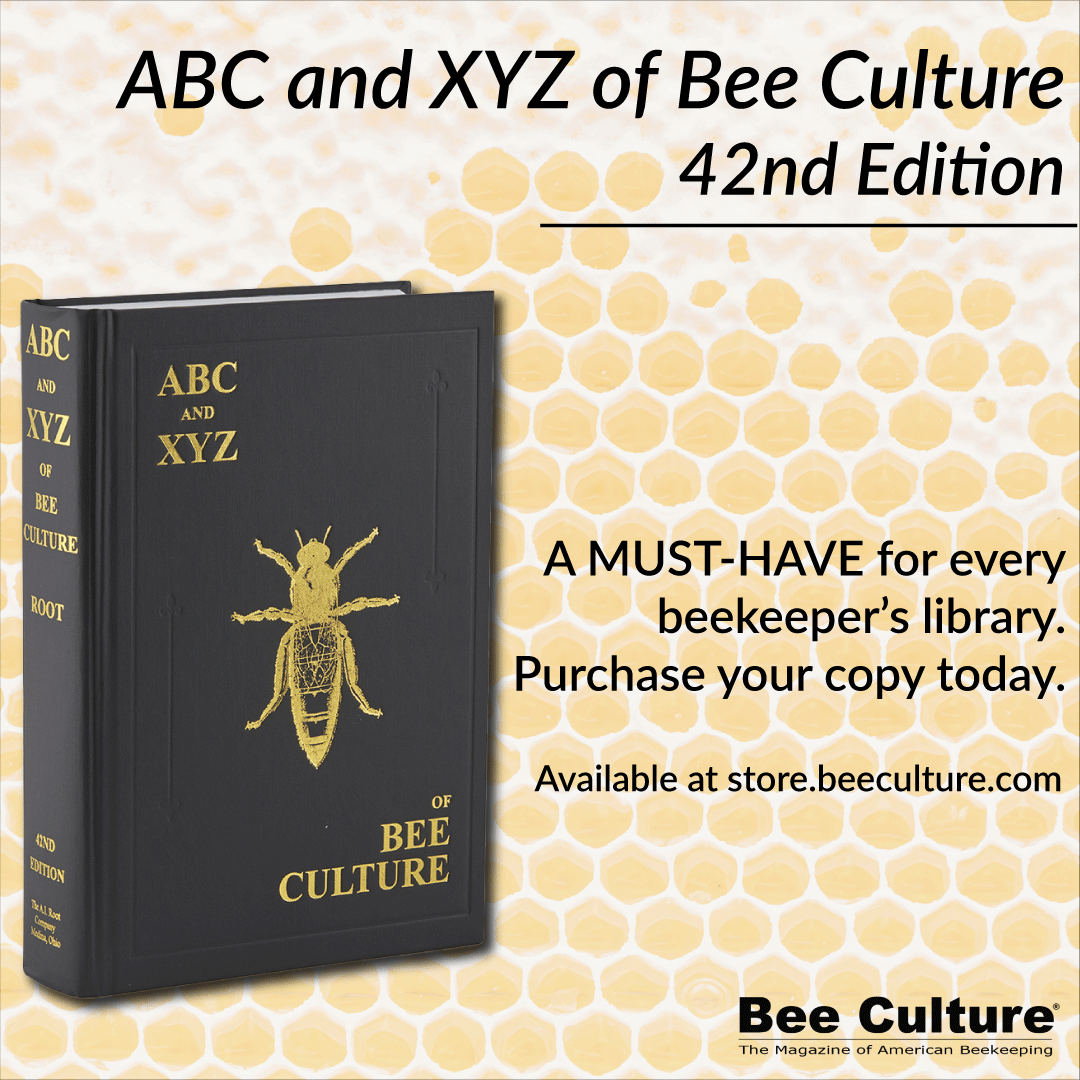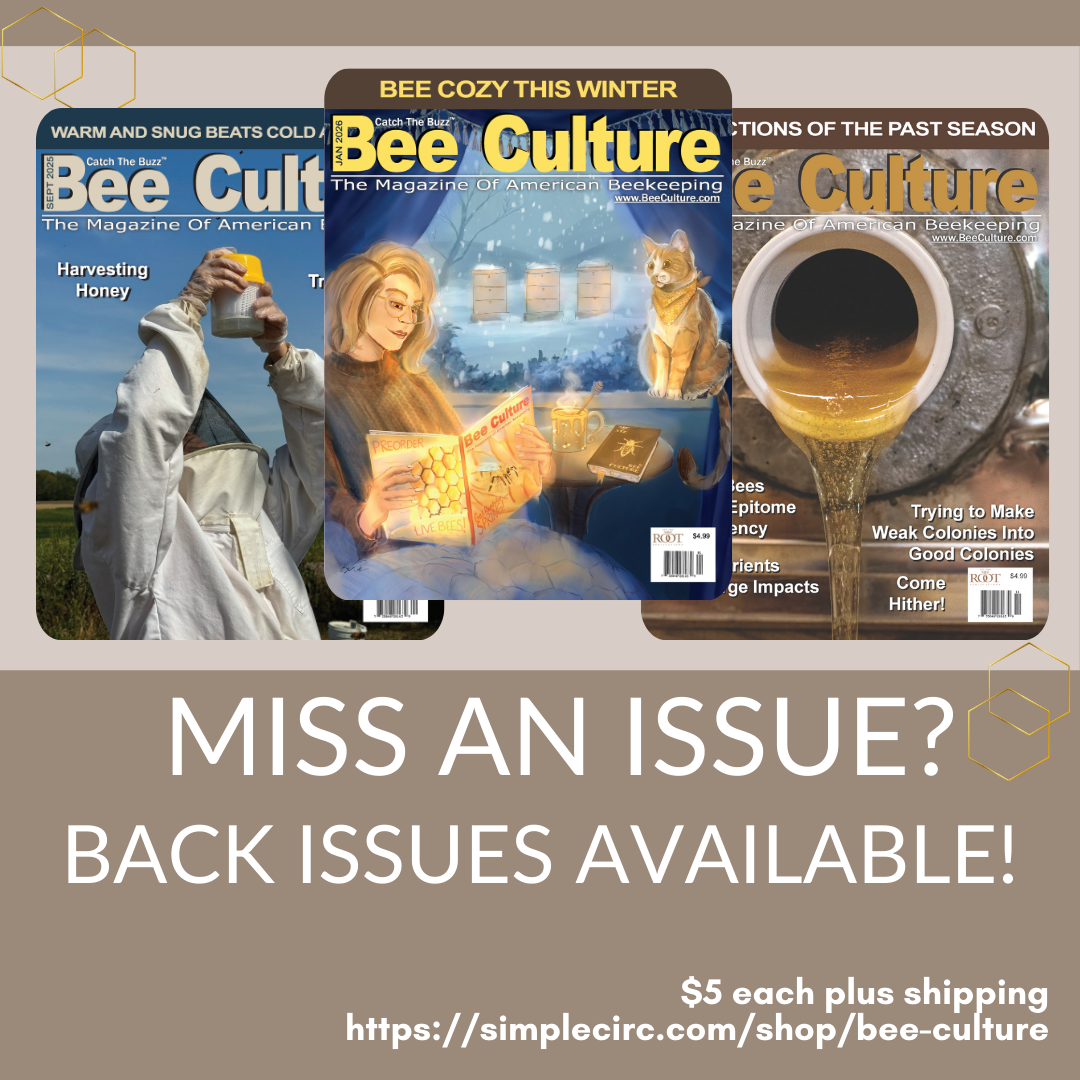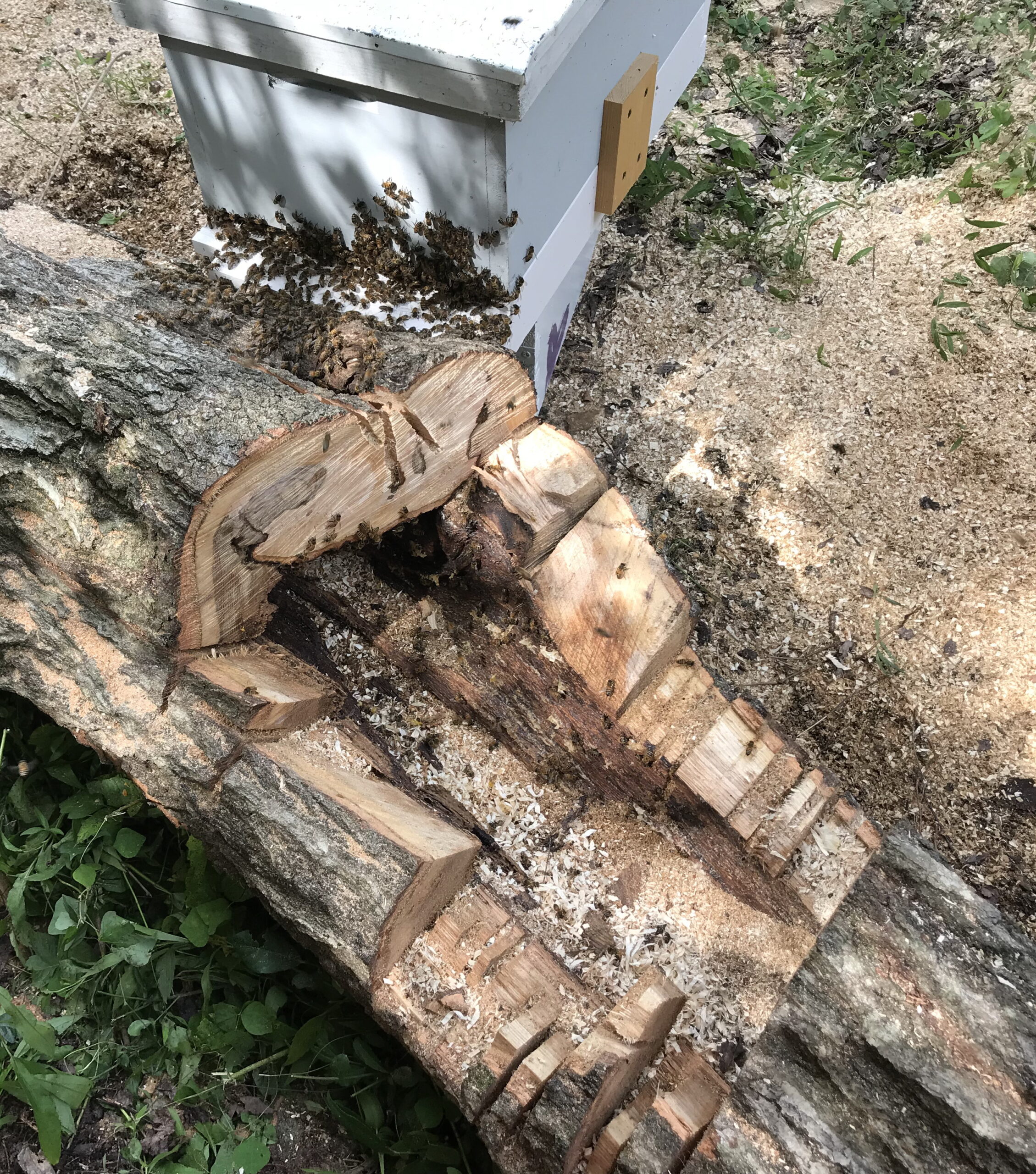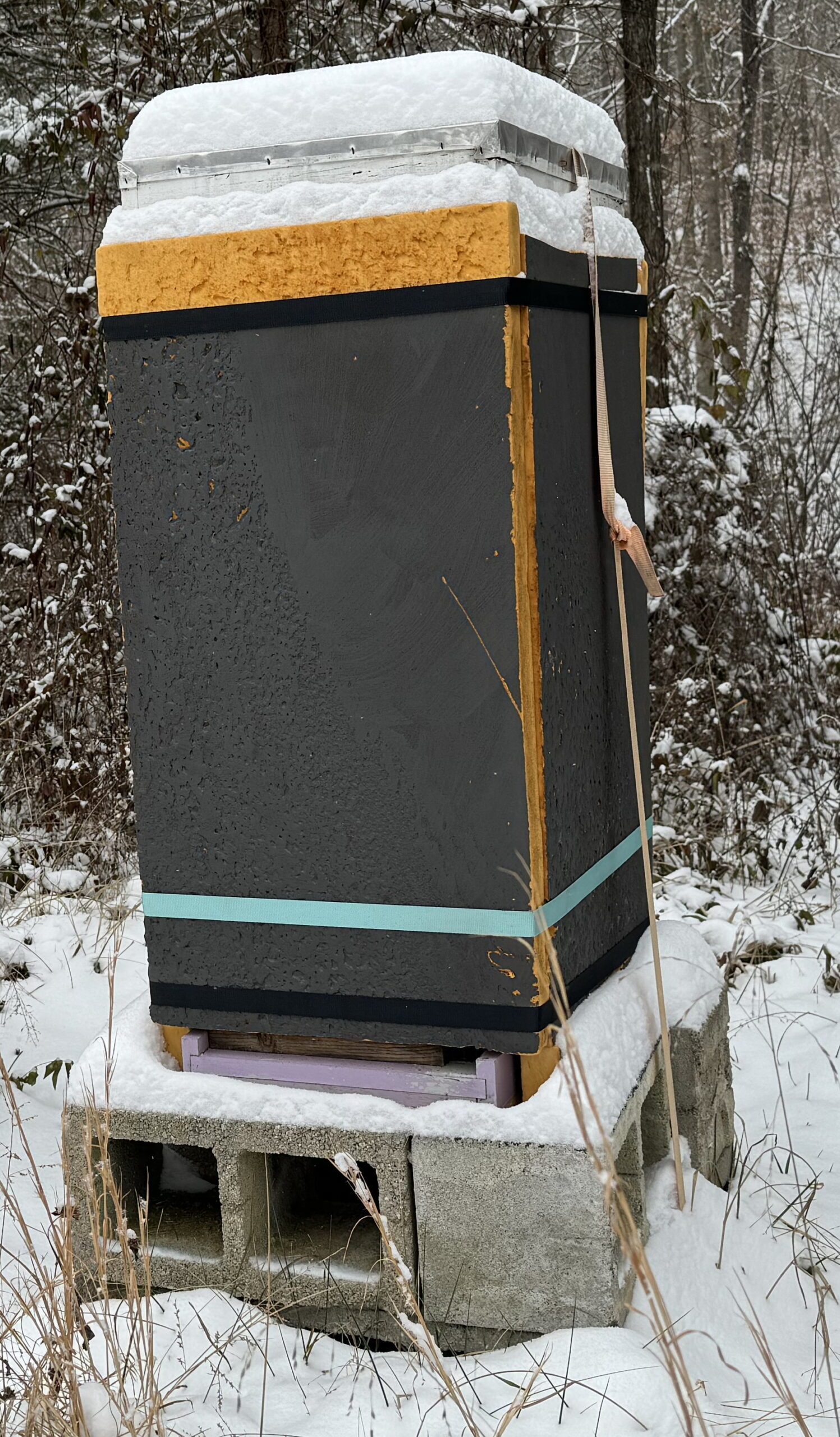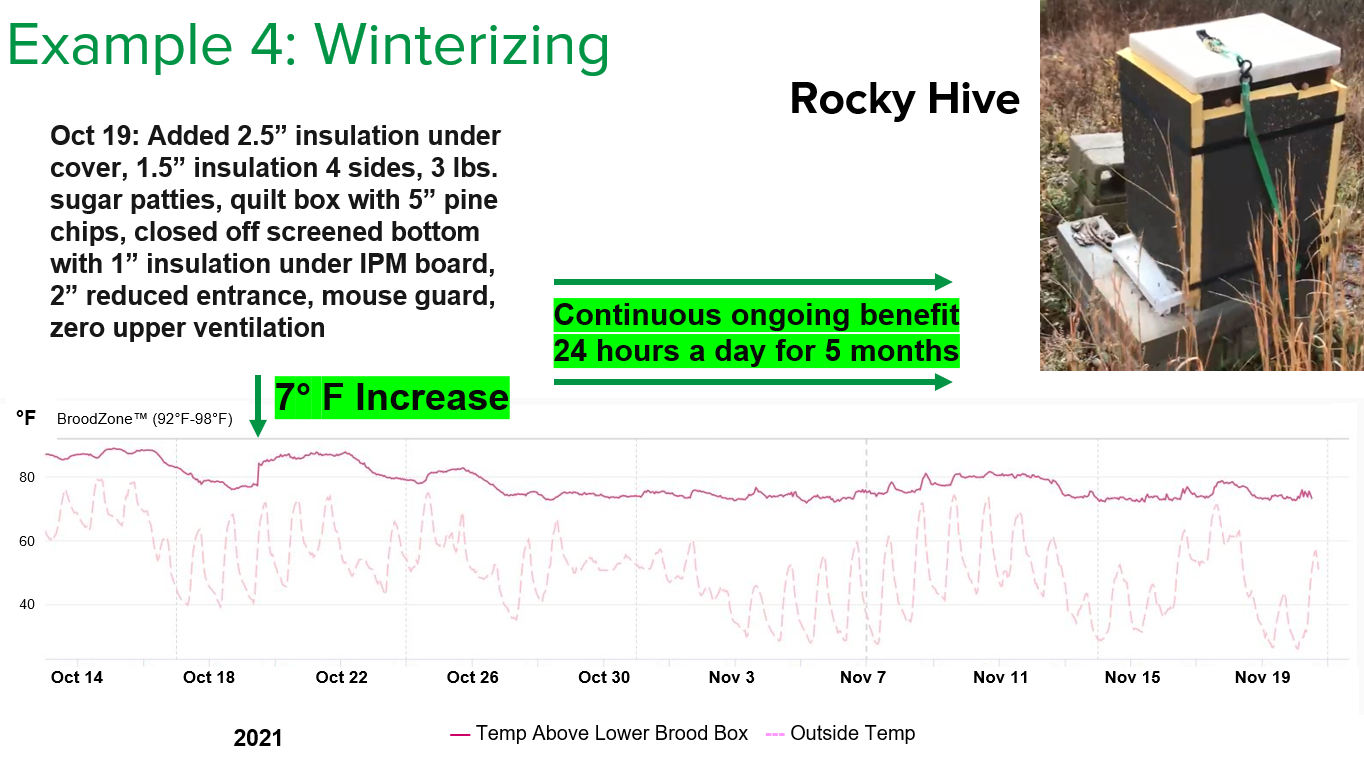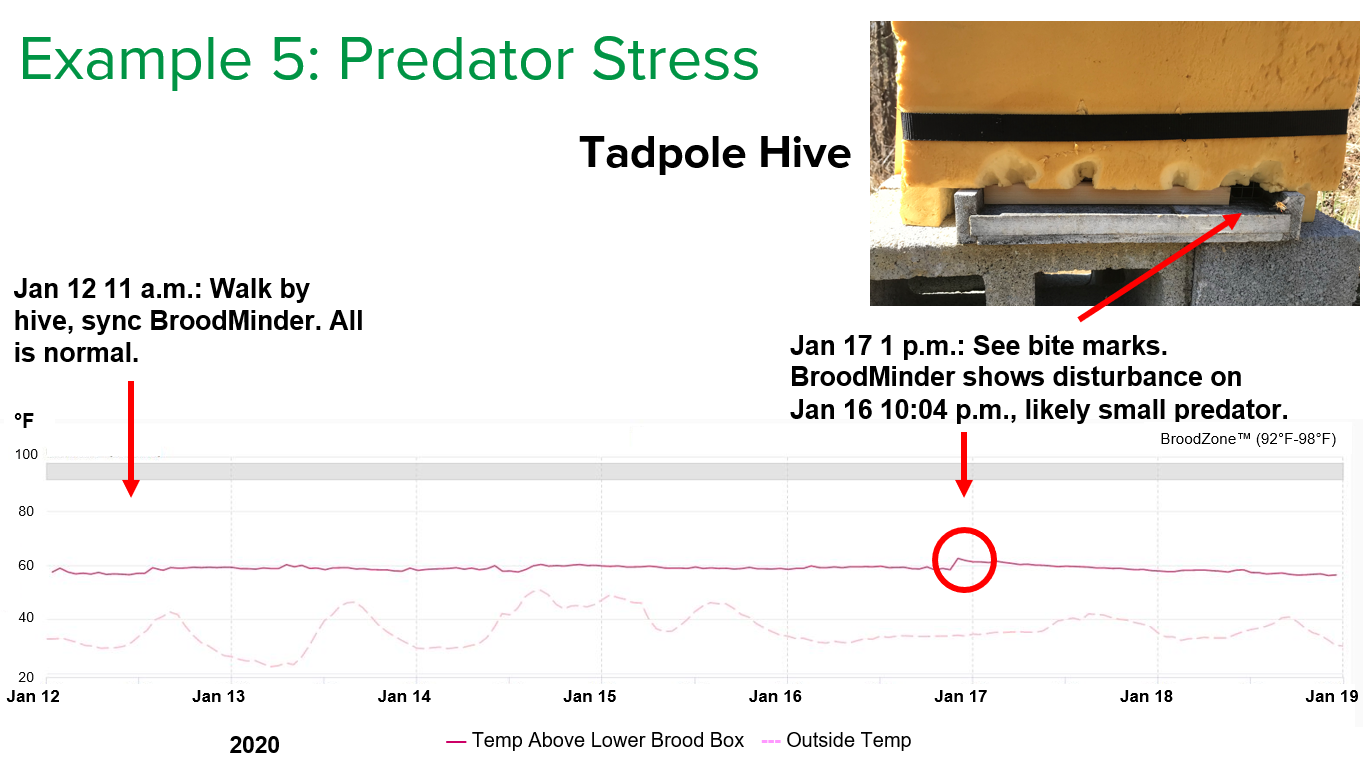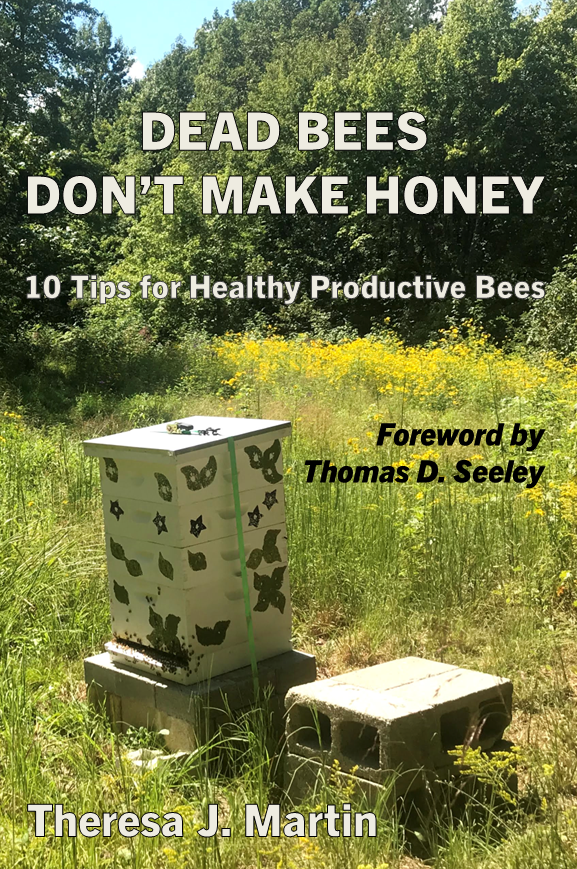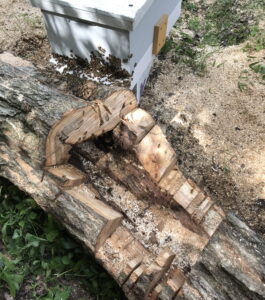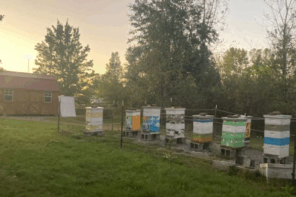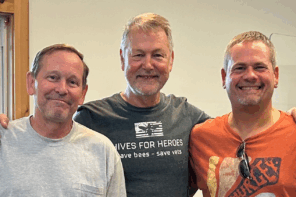Click Here if you listened. We’d love to know what you think. There is even a spot for feedback!
Read along below!
Part 4 – Take the Temperature of Your Colony:
Beekeeper Actions
Theresa J. Martin
I begin by clarifying that BroodMinder does not compensate me in any way for my statements about its product. What I write is my uninfluenced viewpoint based solely on my experience.1
In this four-part series, we have been exploring how temperature sensors provide the beekeeper with actionable information that improves colony outcomes. In this final part, we will review two examples: how the BroodMinder temperature sensor can demonstrate the value of winterizing and indicate a predator visit.
Example 4: Winterizing
Honey bees (Apis mellifera) evolved to live in a well-insulated, humid tree cavity. The walls of a typical tree cavity are between 5 and 14 inches thick, with infinite insulation above and below the cavity, which exhibits temperature stability. A tree cavity is so well insulated that research suggests colonies living in a natural cavity rarely cluster, instead, moving freely in a loose configuration. In addition, bees capitalize on moisture inside a natural cavity in Winter, using it for homeostasis and brood rearing. Most natural tree cavities contain a single, small entrance at the bottom of the cavity, with no upper entrance (Figure 1).2 Multiple studies detail the advantages of having no upper ventilation, such as reduced heat loss and increased levels of carbon dioxide. Finally, multiple studies found higher levels of carbon dioxide significantly increase Varroa mortality.3
Honey bee colonies practice thermoregulation to stay warm in Winter, consuming honey to generate heat by vibrating their indirect flight muscles. A colony maintains an internal cluster temperature of approximately 85°F when not rearing brood, and 95°F when brood is present.
Following this recent science, I heavily winterize my hives every Autumn (Figure 2). My winterizing approach has evolved over the years, as I strive to apply the most recent up-to-date research. This example occurred on October 19, 2021, while winterizing my colony called Rocky hive. I winterized Rocky by putting 2.5 inches of foam insulation under the cover, added a quilt box with 5 inches of pine chips, included zero upper ventilation, placed three pounds of sugar patties on the top frames as insurance against starvation, added 1.5 inches of foam insulation on four sides of the hive, closed off the screened bottom board with 1 inch of foam insulation underneath the screened bottom board insert, reduced the entrance to 2 inches wide, and installed a mouse guard. As the graph in Figure 3 shows, the day I winterized Rocky, there was a discernable 7°F increase in temperature inside the colony.
Like all beekeepers, I question the value of my actions because I want to invest my limited time doing activities that matter most to the health and productivity of my colonies. The increase in temperature after winterizing indicates this is likely a value-added action that supports colony survival through my five months of Winter. While the effort I spend to winterize is significant, it benefits colonies by enabling them to expend less energy performing thermoregulation, reduces taxation on their metabolic system, lowers cold stress, and enables them to greet spring more ready to work. Research shows that insulation and withholding upper ventilation improves the health and survival of our managed bees, and the BroodMinder temperature sensor data supports this as well. This is also supported by my 99% colony survival and honey production that is above the local average in my seven years as a beekeeper, with 20–25 colonies in Kentucky.
Example 5: Predator Stress
The final example shows a temperature spike, likely due to a visit by a skunk, raccoon or opossum at Tadpole hive (Figure 4). On January 12, 2020, at about 11 a.m., I walked by Tadpole hive and synced the temperature sensor with my smartphone, noting in my bee journal that all was well. A week later, on January 17, I walked by Tadpole hive again and noticed big chunks missing from the insulation. I looked at the ground but did not see any disturbance. So, I synced my phone with the temperature sensor and saw that on January 16 at 10:04 p.m. on a cold night, there was a small but discernible increase in temperature. The spike up in temperature after dark and the bite marks are a strong indication that some little predator — probably a skunk, raccoon or opossum — visited Tadpole hive.
I continued to monitor the temperature of Tadpole hive and looked for more bite marks and disturbed ground in front of the hive. There were no further disturbances, so I did nothing. The little visitor was probably just passing through and did not return. If not for the BroodMinder sensor, I might have needlessly put chicken wire around Tadpole hive to protect them. As it was, I did not waste my time, aided by the useful additional information provided by the temperature sensor inside Tadpole hive.
Improved Colony Health and Productivity
W. Edwards Deming said, “Without data, you are just another person with an opinion.” By combining temperature data with knowledge of bee biology and the most up-to-date, peer-reviewed research, beekeepers can take better informed actions that improve the health, survival and productivity of their bees.
Theresa J. Martin is the author of Dead Bees Don’t Make Honey: 10 Tips for Healthy Productive Bees, which includes a Foreword by Dr. Thomas Seeley. She is a Cornell Master Beekeeper, 2024 Kentucky State Beekeeper of the Year, and Vice President of the Kentucky State Beekeepers Association. Theresa can be reached at theresa@littlewolf.farm
REFERENCES
1See www.broodminder.com for more information. I am not compensated by BroodMinder in any way.
2Extensive research details the physical properties of a tree cavity, and how this contrasts with the thermal properties of the standard managed bee hive box. Seeley and Morse (1976) provide our best current understanding of the structure of a natural nest cavity. Mitchell (2016, 2017, 2023) provides engineering studies that detail thermal properties of cavities versus managed hives and calls into question the idea that colonies cluster as a normal method of keeping warm in winter. Hesbach (2020) offers the condensing colony concept, which enables managed winter colonies to use moisture for homeostasis and brood rearing.
Seeley, T. D., Morse, R. A. (1976). The nest of the honey bee (Apis mellifera L.). Insectes Sociaux, 23(4), 495-512. https://doi.org/10.1007/BF02223477
Mitchell, D. (2016). Ratios of colony mass to thermal conductance of tree and man-made nest enclosures of Apis mellifera: implications for survival, clustering, humidity regulation and Varroa destructor. International Journal of Biometeorology, 60(5), 629-638. https://doi.org/10.1007/s00484-015-1057-z
Mitchell, D. (2017). Honey bee engineering: top ventilation and top entrances. University of Leeds. American Bee Journal, 157(8), 887-889. ISSN 0002-7626. eprints.whiterose.ac.uk/141140/5/honeybee_engineering.pdf
Mitchell, D. (2023). Honeybee cluster-not insulation but stressful heat sink. Journal of the Royal Society Interface, 20:20230488. https://doi.org/10.1098/rsif.2023.0488
Hesbach, W. 2020. The condensing colony. American Bee Journal, 160 (2), 170-180. https://bluetoad.compublic
ation/?m=5417&i=646365&p=56&ver=html5
3Multiple studies demonstrate that higher levels of CO2 in an unventilated hive increases Varroa mortality.
Onayemi, S. O., Hopkins, B. K., Sheppard, W. S. (2022). Elevated CO2 increases overwintering mortality of Varroa destructor (Mesostigmata: Varroidae) in honey bee (Hymenoptera: Apidae) colonies. Journal of Economic Entomology, 115(4), 1054–1058. https://doi.org/10.1093/jee/toac065
Kozak, P. R., Currie, R. W. (2022) Laboratory study on the effects of temperature and three ventilation rates on infestations of Varroa destructor in clusters of honey bees (Hymenoptera: Apidae). Journal of Economic Entomology, 104(6), 1774–1782. https://doi.org/10.1603/EC08278

